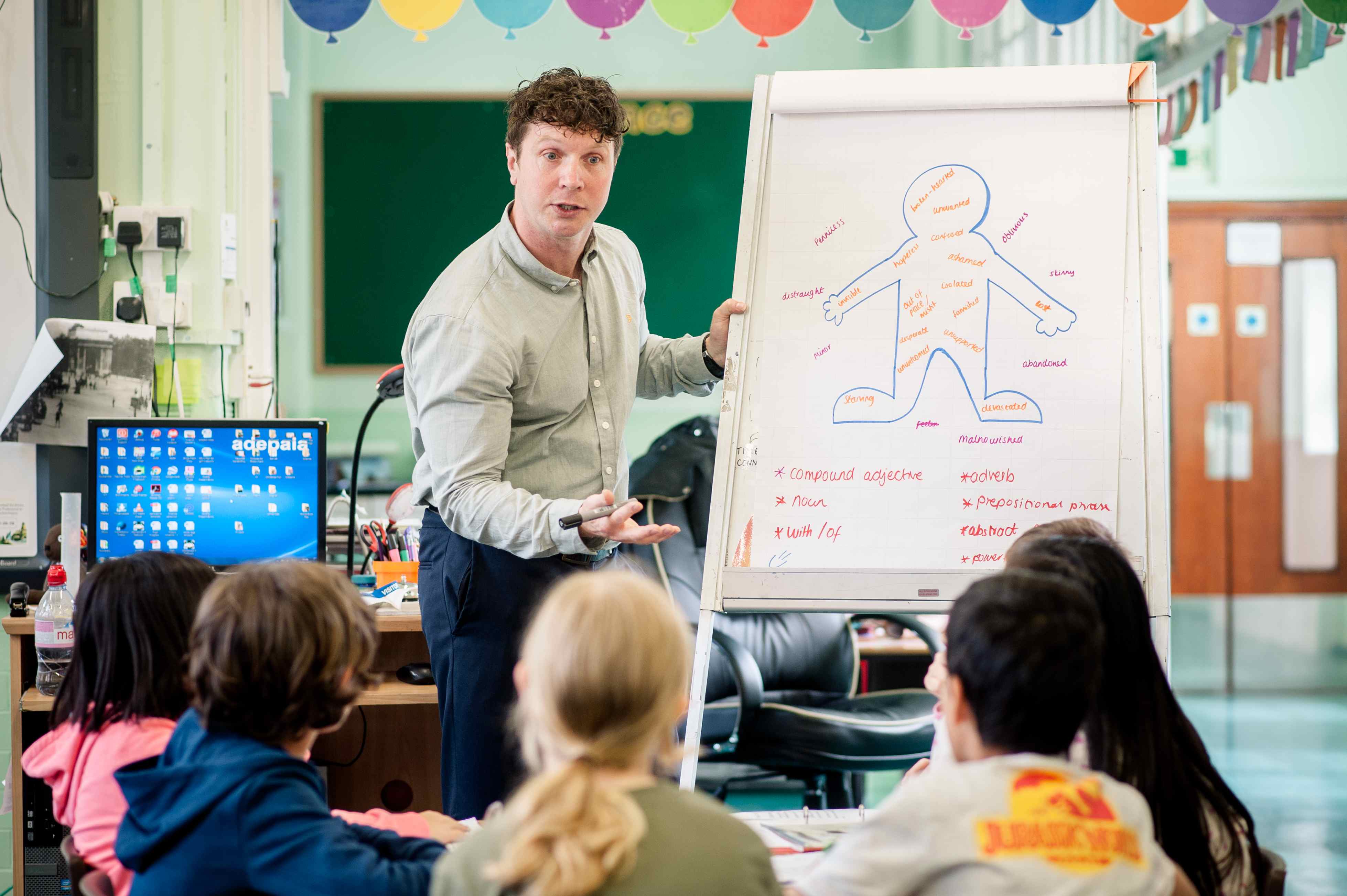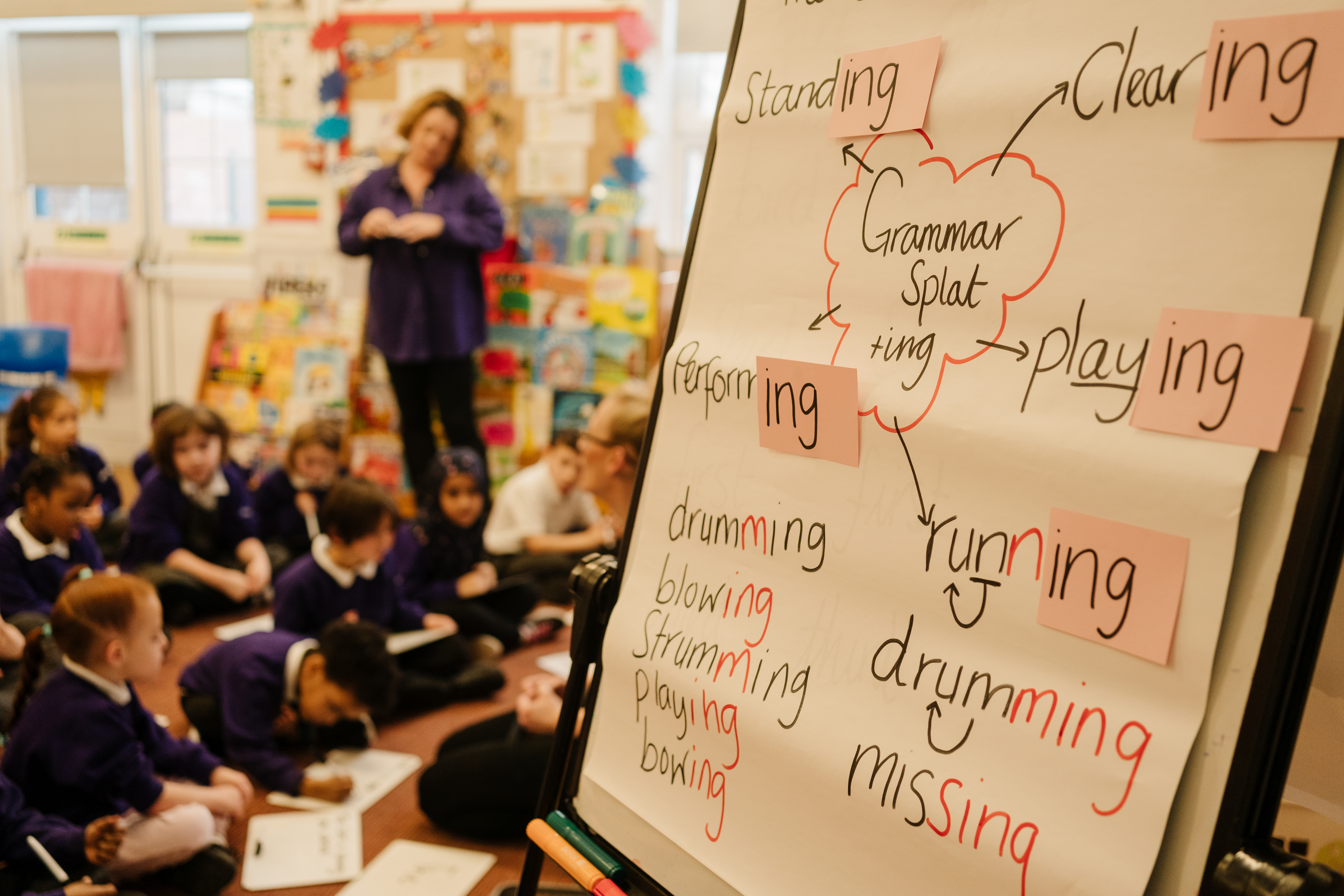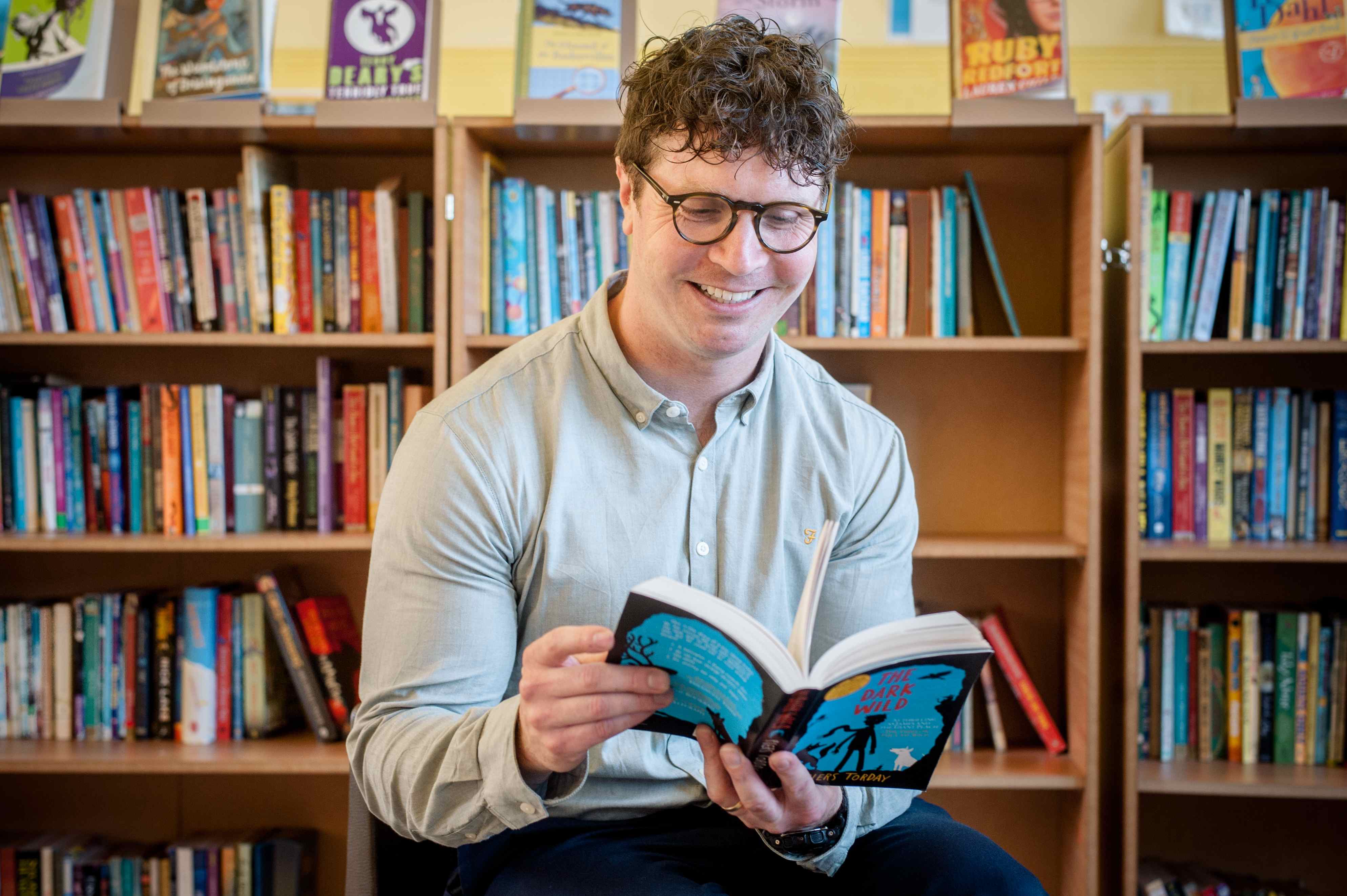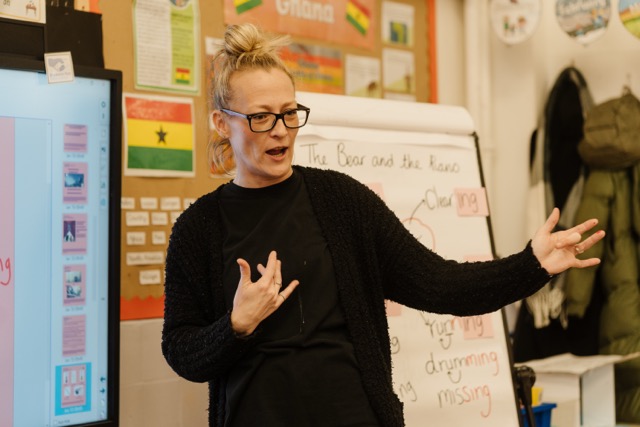Written by:
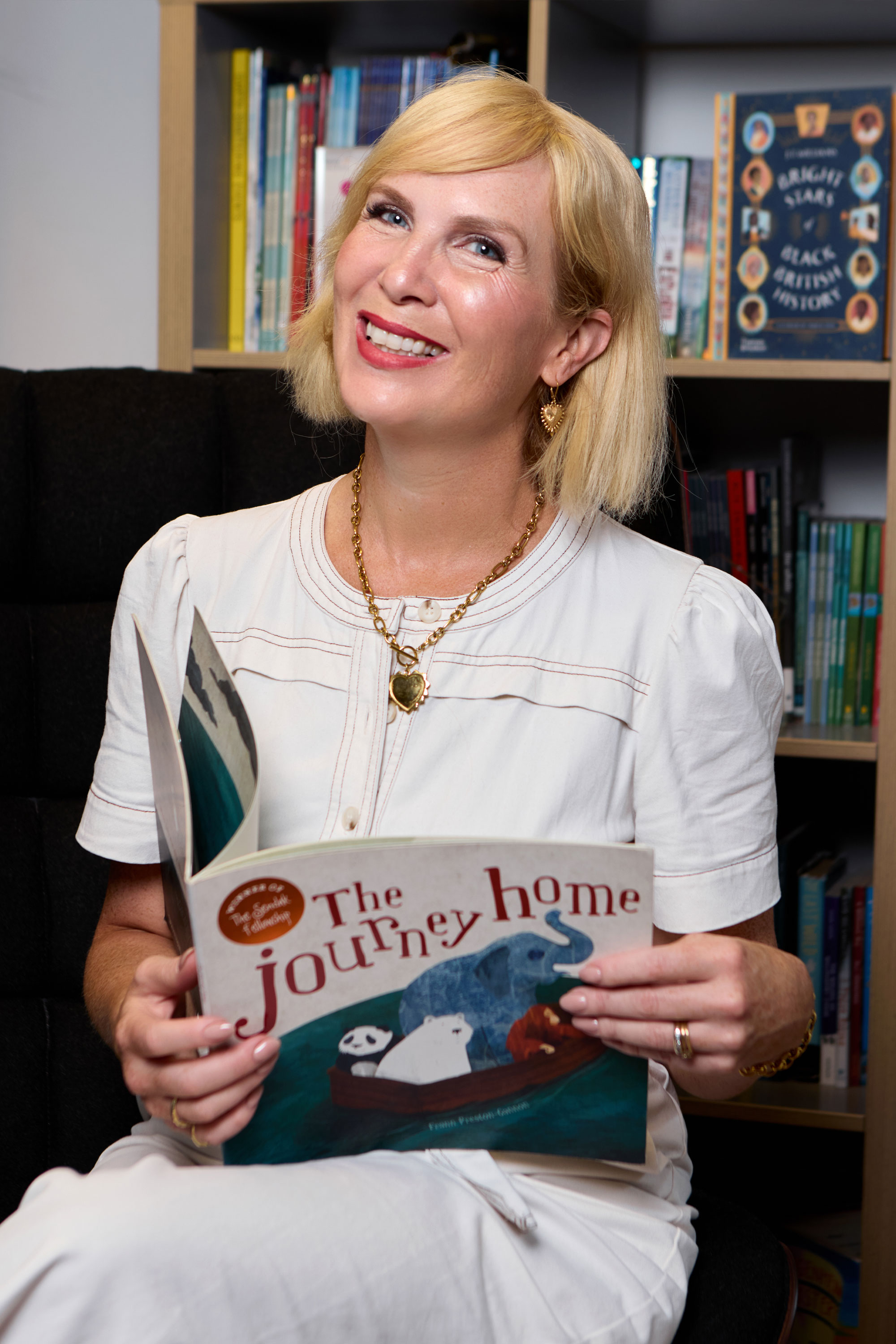
Lynn Sear
Co-CEO & Co-Founder
One of the most common questions we are asked is: “Why don’t you provide PowerPoints with your plans?” It’s a fair question. With so many ready-made resources and classroom visuals available, it might seem unusual that our approach deliberately avoids this. But the answer is simple: the way children experience writing (and the way teachers teach it) matters too much to be reduced to a set of pre-prepared slides.
|
The Importance of Shared Writing At the heart of Literacy Tree and our Teach Through a Text pedagogy is the principle that writing must be modelled live. When a teacher takes a pen to the board, or uses a visualiser to share a book, they are doing more than simply demonstrating grammar or sentence structure. They are showing children what it feels liketo write the pauses, the revisions, the messy crossings out, and the moments of inspiration. A PowerPoint can display a polished version of a paragraph, but it cannot replicate the thought process of a writer. Children need to see their teacher wrestling with word choices, thinking aloud about sentence variety, or returning to the book to draw evidence (albeit ready prepared on a post-it note!). This live modelling is what makes writing sticky, accessible, authentic, and achievable for young children. Seeing something polished can occasionally seem daunting rather than inspiring. In the age of AI we have access to so many models and we can lose the opportunity to talk about audience and purpose if we start with the published version. |
|
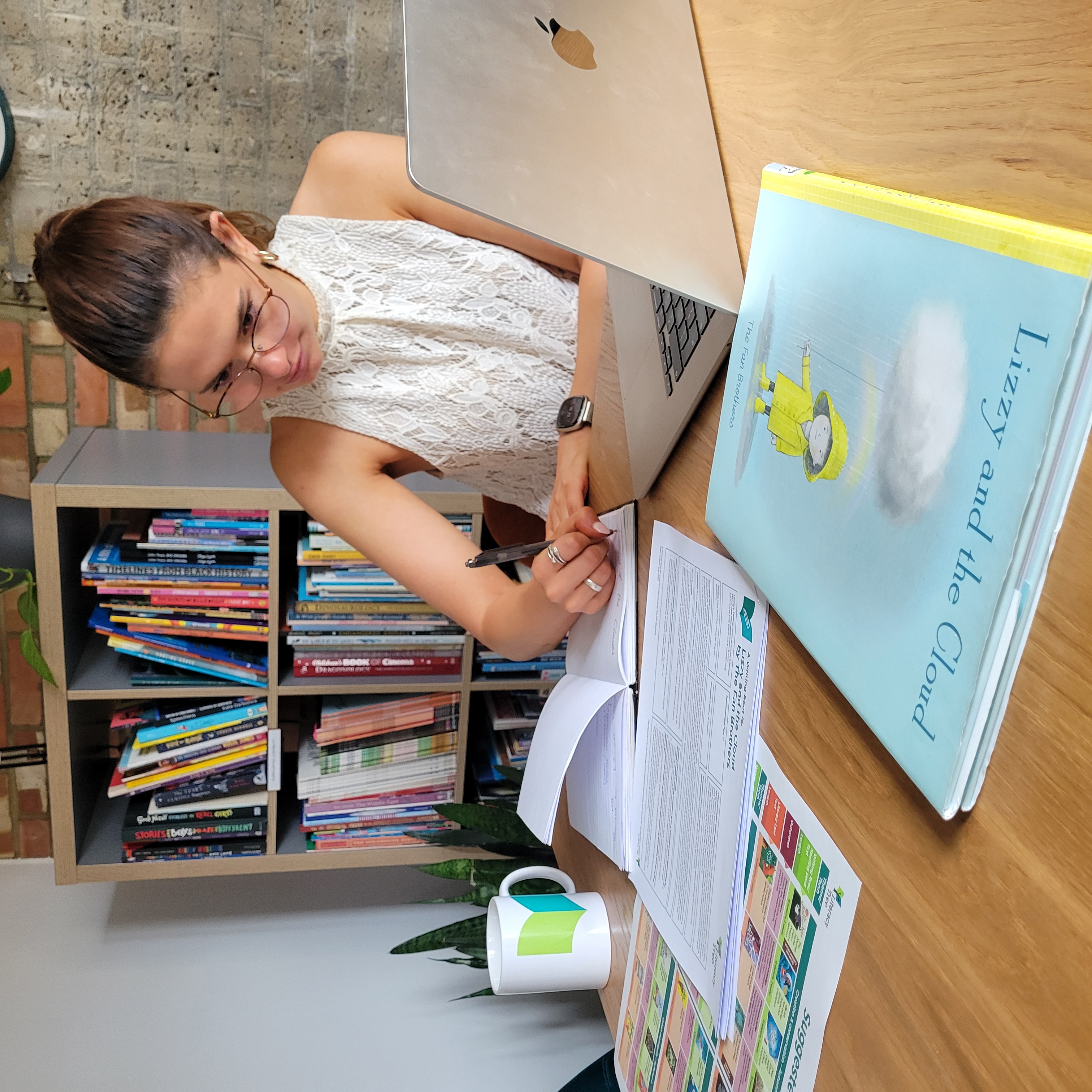 |
Planning That Goes Beyond Delivery Another reason we don’t create PowerPoints is because our planning is intentionally detailed and carefully sequenced. Each step has been designed to support deeper engagement with the text and with the process of writing. When teachers prepare by reading the sequence in full (rather than clicking through pre-made slides) they are more likely to internalise the rationale behind each lesson. This means that when teachers step into the classroom, they aren’t simply delivering someone else’s lesson; they are immersing within it. They understand why a lesson comes at a certain point, how it connects to the book, and what outcome it is building towards. That deeper understanding allows for adaptive planning, responsiveness, and a much more authentic teaching experience. |
|
Engagement with the Book Our approach is rooted in high-quality children’s literature. The planning is designed to put the book itself at the centre of the classroom experience, not a set of slides. When teachers engage fully with the text, they bring it alive for their pupils: the voices, the rhythms, the imagery. This connection cannot be outsourced to a PowerPoint deck. Books invite curiosity, conversation, and close reading. They deserve to be handled, re-read, and discussed and sometimes a screen can distract from that. |
|
|
|
Moving Beyond Delivery Ultimately, our decision not to provide PowerPoints is about keeping teachers and children in the moment. A slide written by someone else can become a script, and when teaching slips into script-reading, the magic of shared discovery risks being lost. By contrast, when teachers use a flip chart, a whiteboard, or a book under a visualiser, they model creativity and flexibility. If teachers want slides to help save time then we want them to create their own, so they can decide what they need and when they need it. We recognise this takes time but we hope that by engaging with the book ahead, the teacher will be ready with the questions (and the answers) that they anticipate their own children will have. |
Essentially Literacy Tree is about more than lesson delivery. It’s about fostering a community of readers and writers, where teachers are writers too, engaging with the same processes they are asking of their children and immersing within the text. That is why we choose not to create PowerPoints, not because it’s easier for us, but because it’s better for the children and the teachers who use us.
